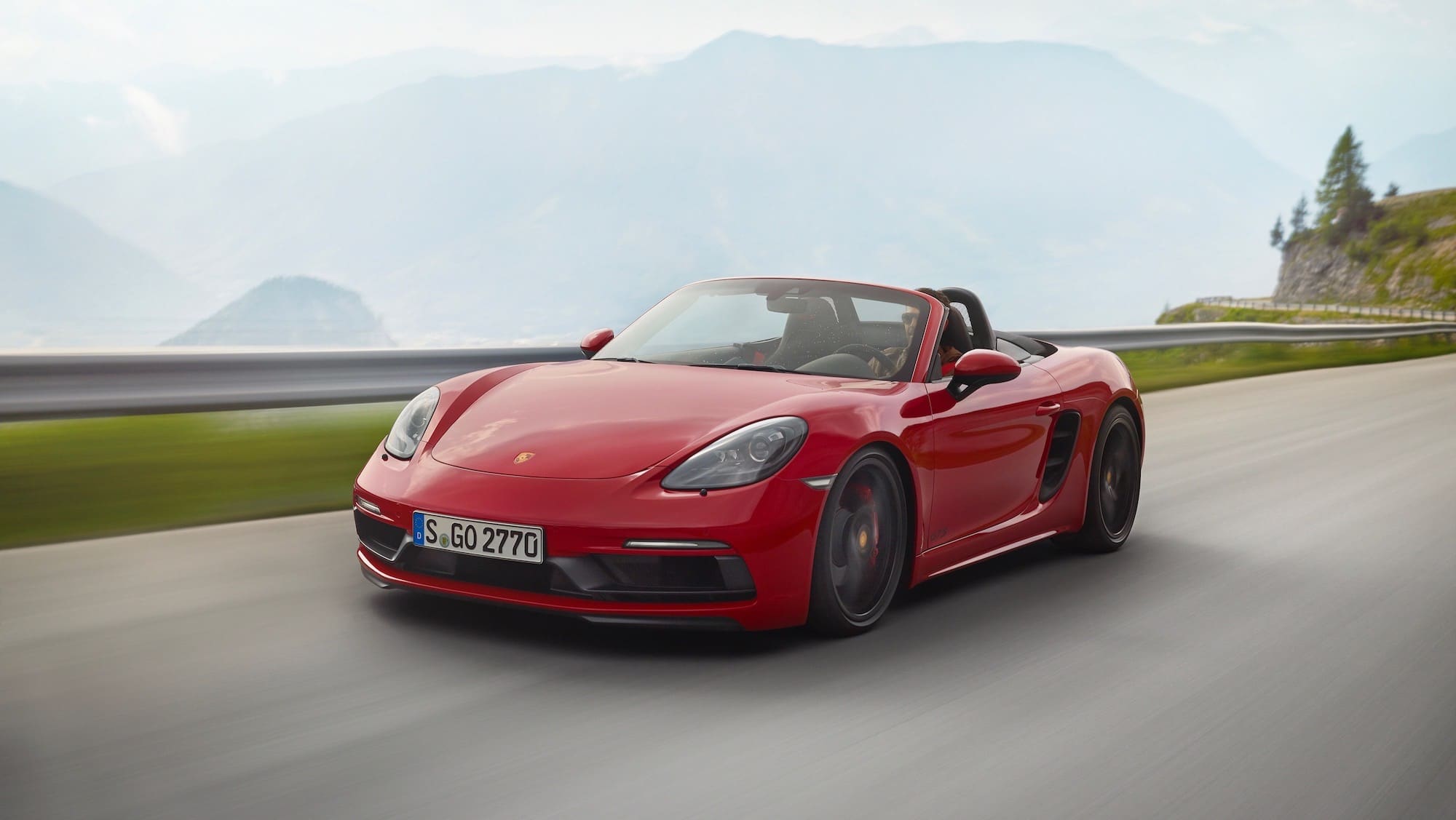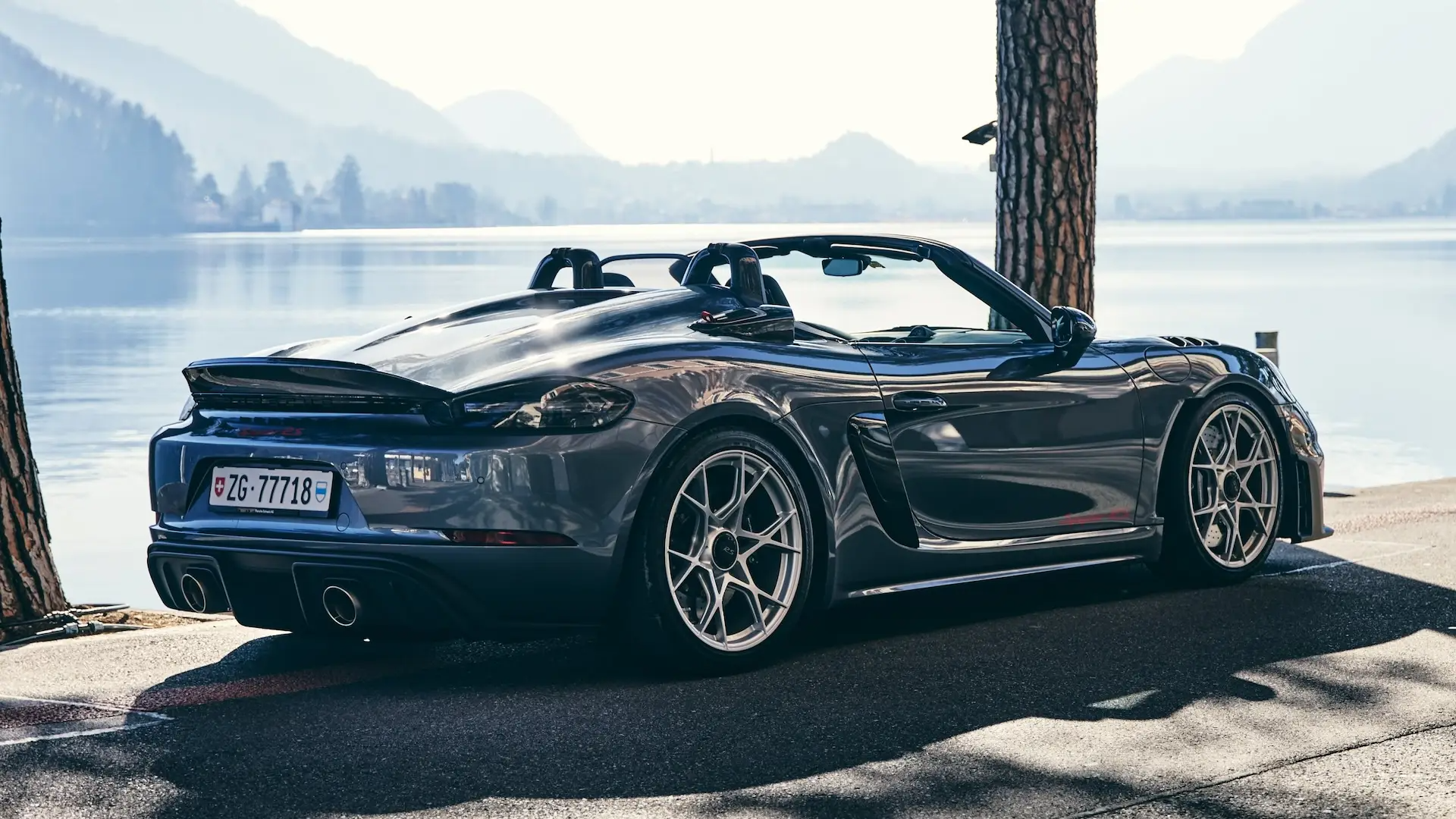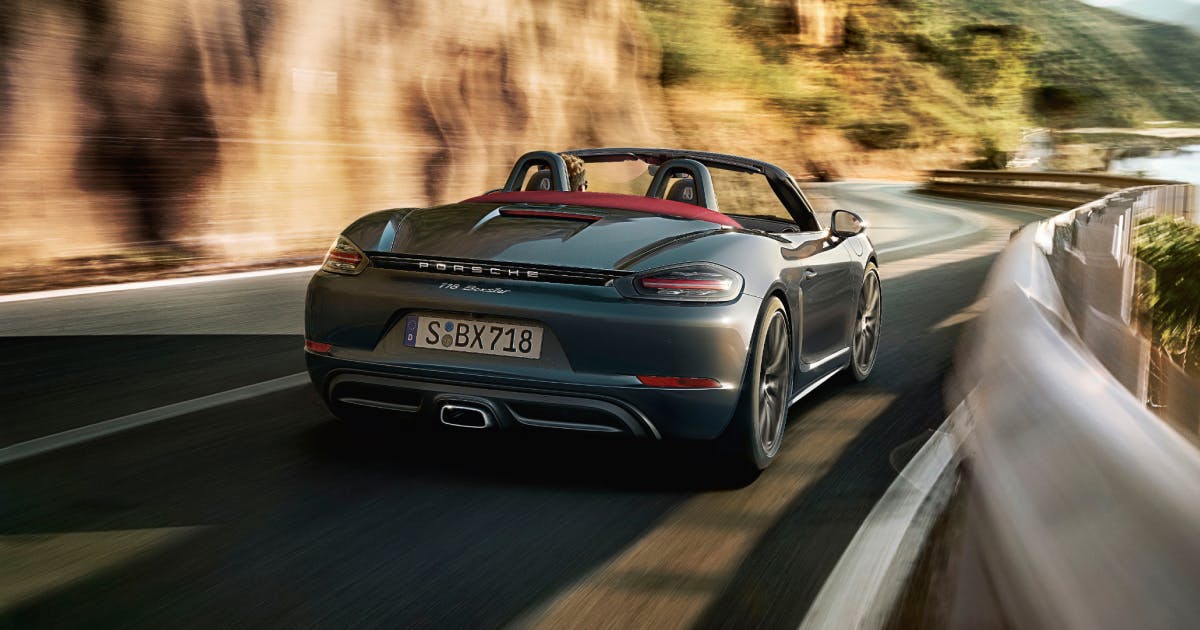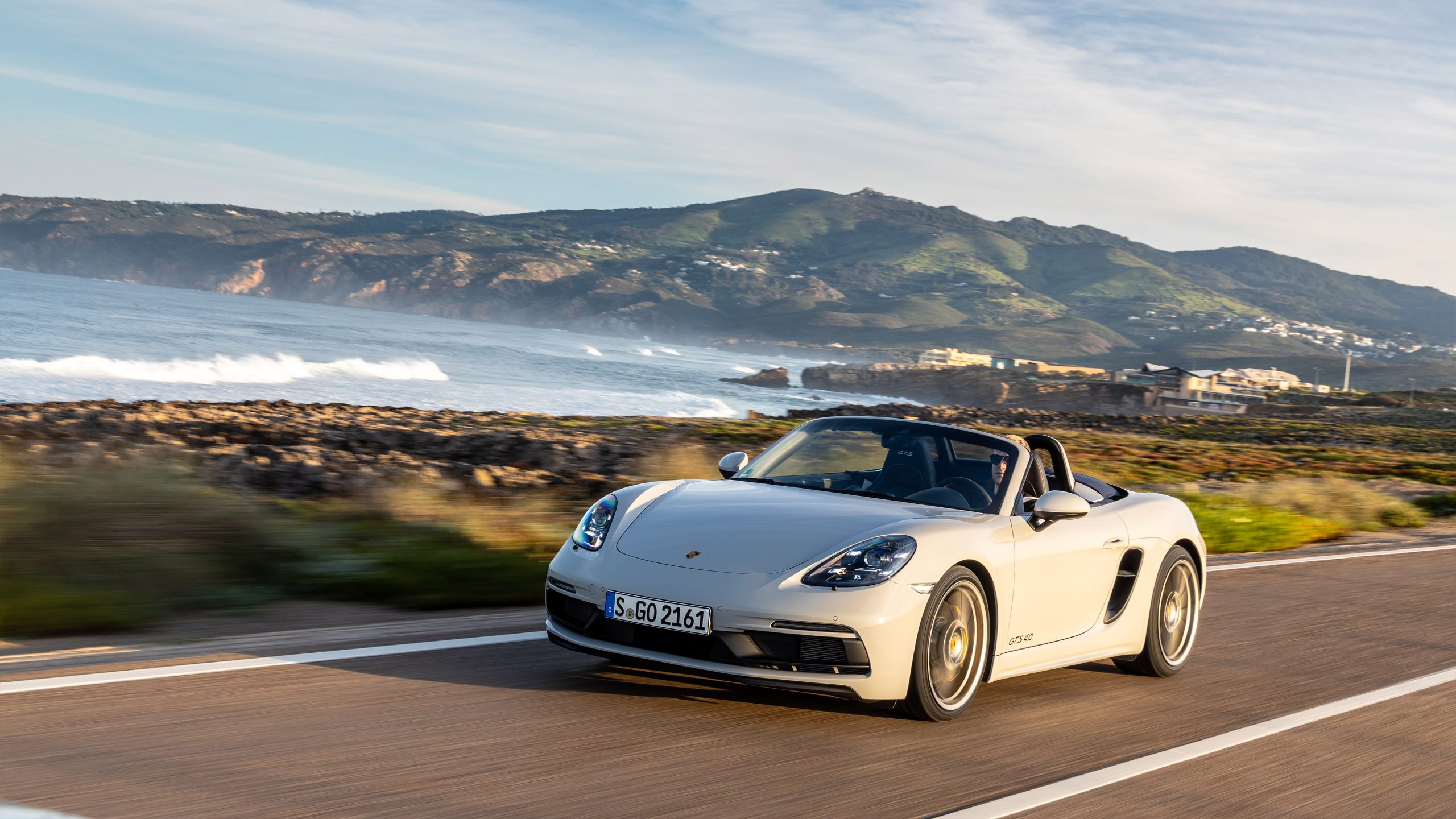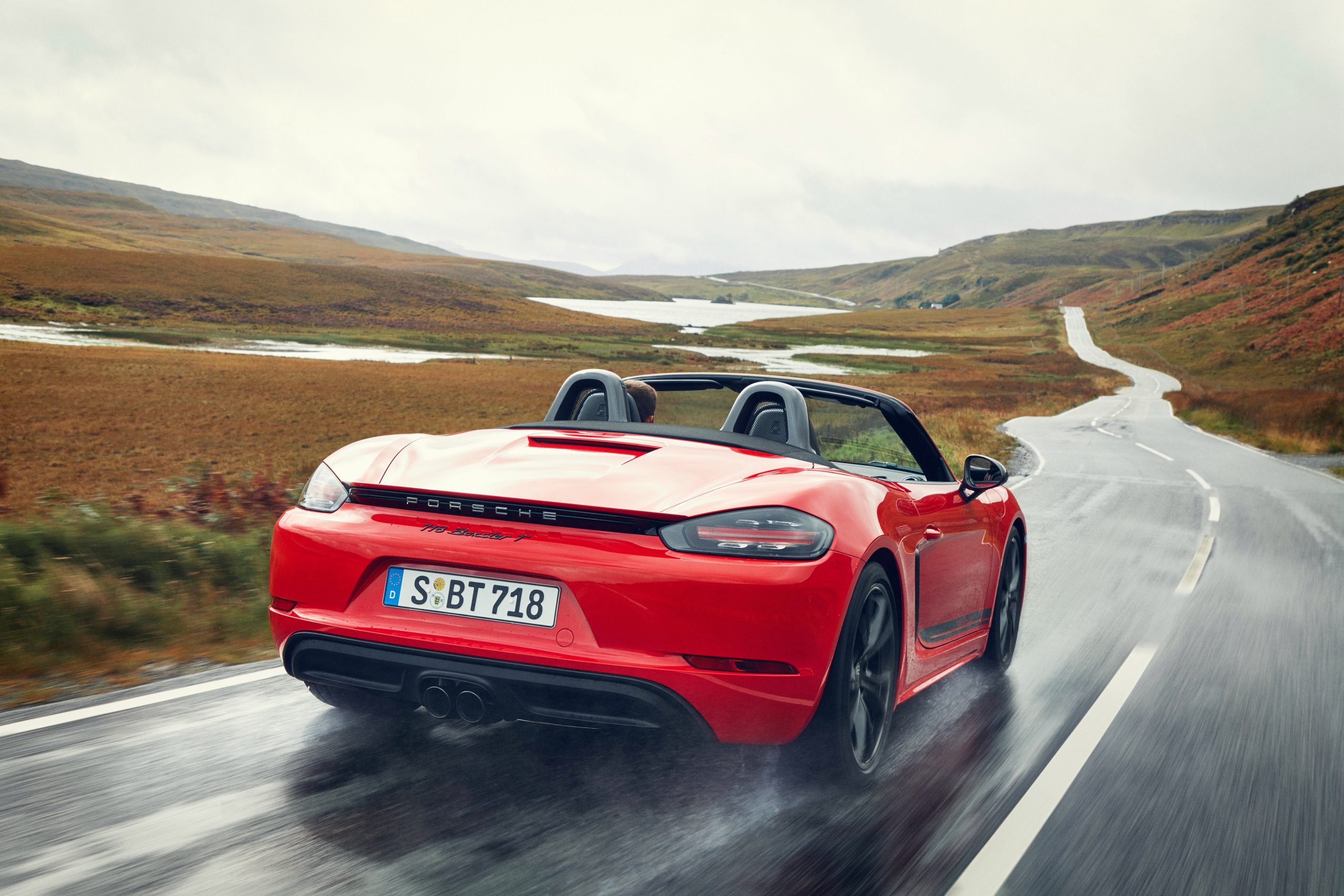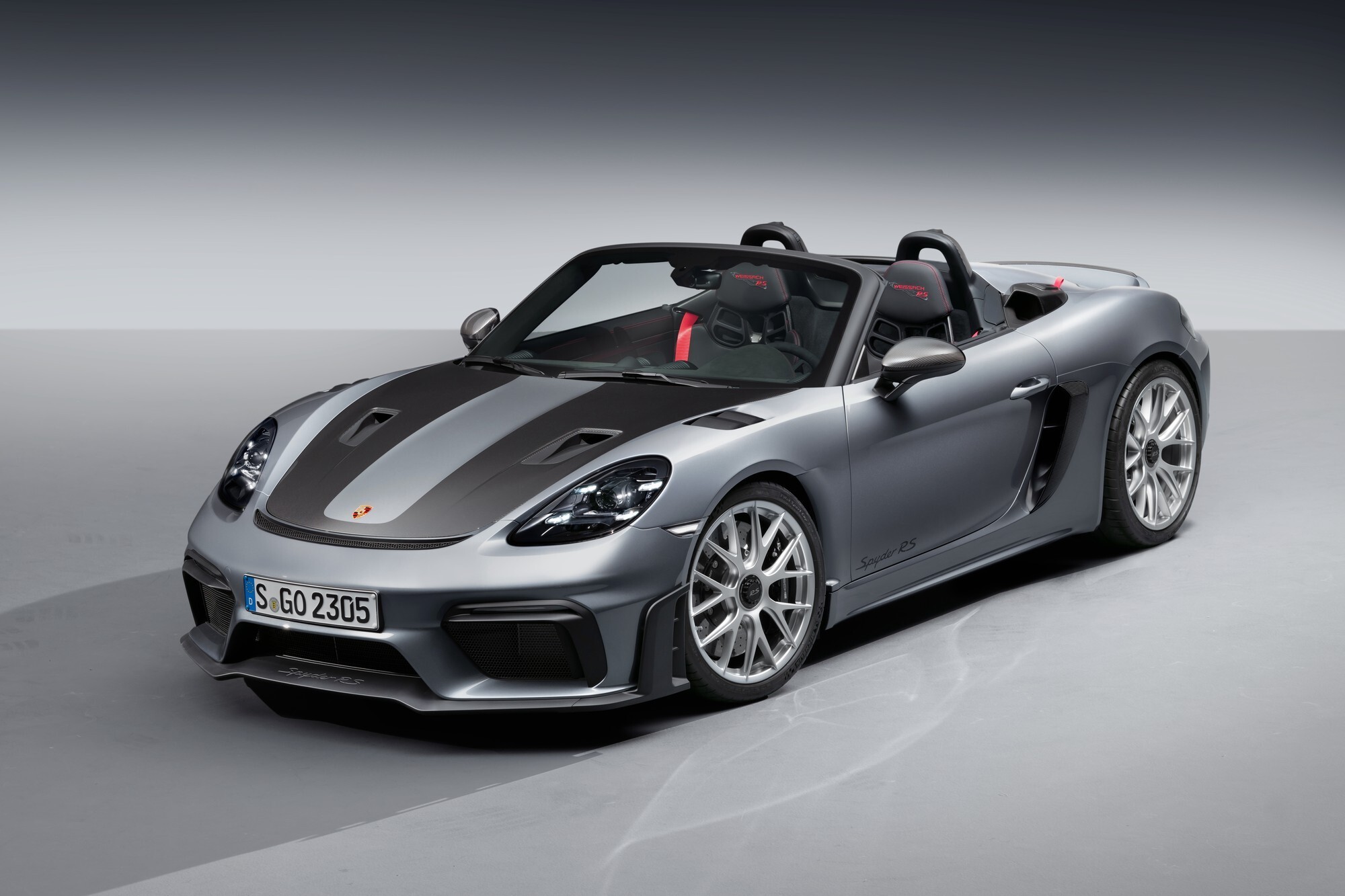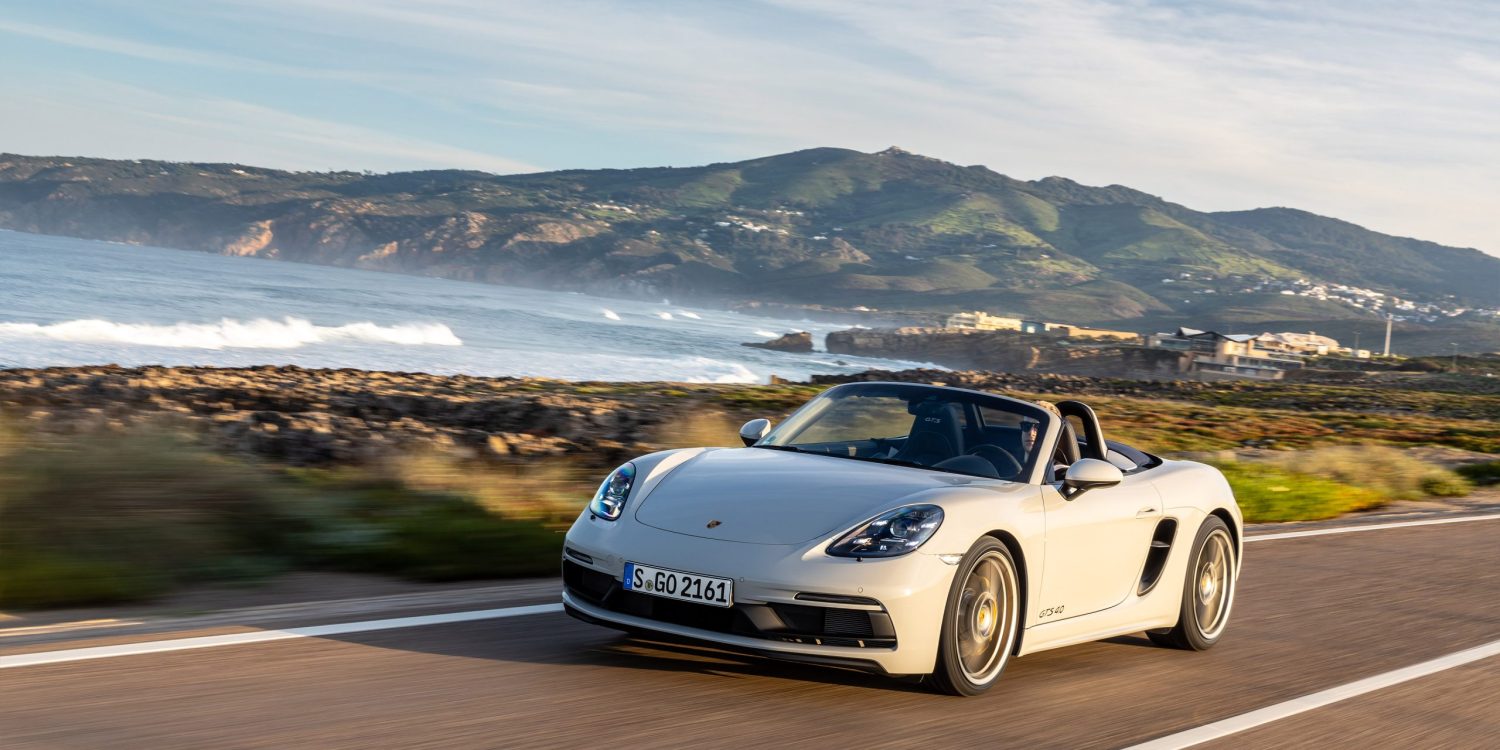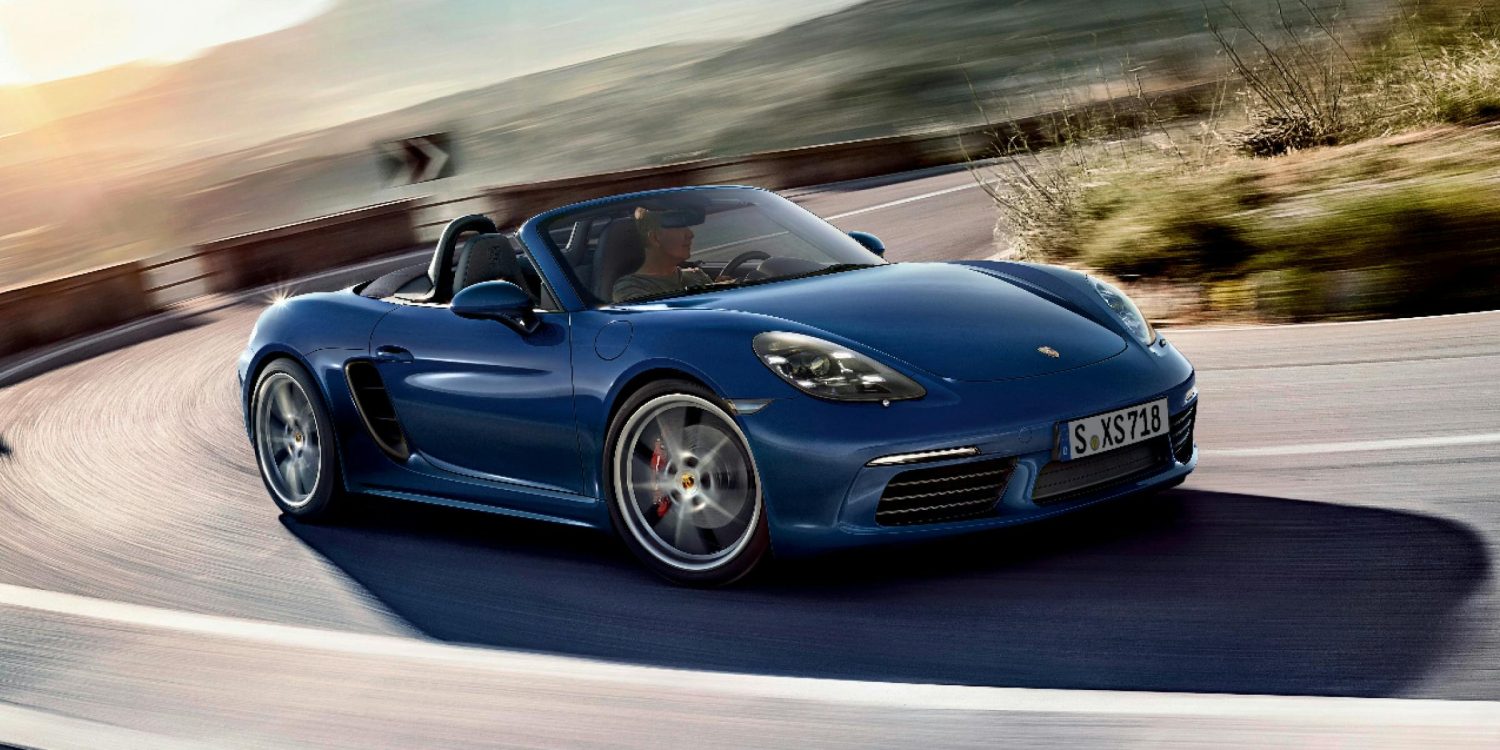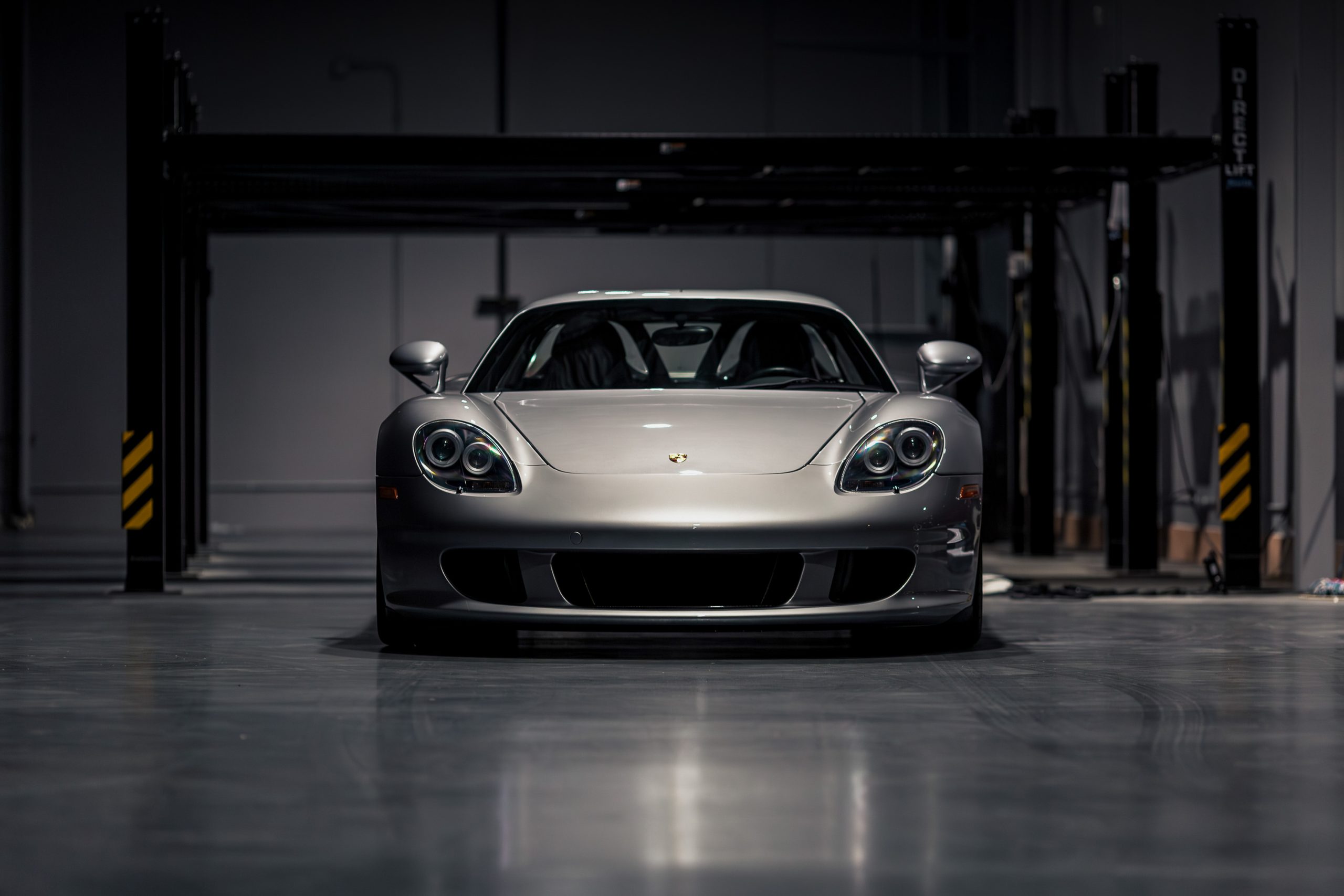4th Generation Porsche 718 Boxster 982 Buyer's Guide
Buying a fourth generation Boxster? Our Guide Covers Key Models, Potential Issues, Values, Tips & More.
The Porsche 718 Boxster represents the latest chapter in Porsche’s long-running mid-engine roadster legacy, bringing turbocharged power, modern tech, and sharper dynamics to a beloved formula.
Launched in 2017 and still in production today, the 718 designation pays homage to Porsche’s lightweight racing cars of the past, but the modern 718 Boxster is all about precision performance and everyday usability. In this buyer’s guide, we focus exclusively on used 718 Boxster models—from the early 2.0-liter turbocharged flat-fours to the naturally aspirated 4.0-liter GTS and Spyder variants—helping you navigate the broad lineup and find the car that suits your needs.
While earlier 718 Boxsters (Base and S models) stirred controversy among enthusiasts with their turbocharged four-cylinder engines, they remain fantastic driver’s cars with strong midrange torque, excellent handling, and approachable pricing on the used market. Later models like the GTS 4.0 and Spyder reintroduced a naturally aspirated flat-six, instantly elevating those cars to modern-classic status. Whether you’re seeking an affordable entry into Porsche ownership or something more special for the weekend twisties, there’s a 718 variant that fits the bill.
In this comprehensive buyer’s guide, we’ll walk you through each key model and trim, outline what potential issues you should watch for, provide market value insights, and share expert-level tips on what to expect from ownership. Whether you’re shopping for a base 718 with the PDK gearbox or hunting down a manual GTS 4.0, this is your go-to resource to confidently navigate the used 718 Boxster market.
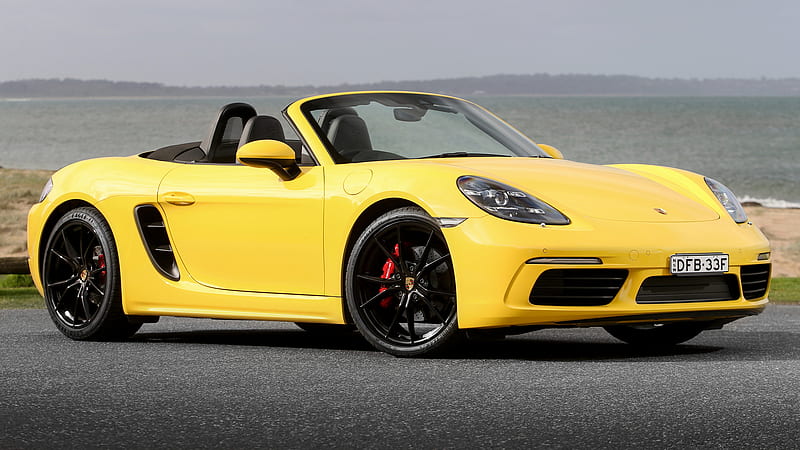
Why the 4th Gen Porsche 718 Boxster (982) is a Unique Sportcar to Buy
The Porsche 718 Boxster (982) is a unique and compelling sports car because it blends modern performance engineering with the timeless appeal of a mid-engine roadster. While its predecessors leaned heavily on the charm of naturally aspirated flat-sixes, the 982 generation marked a turning point—embracing turbocharged four-cylinder engines in most variants. This change sparked fierce debate among purists, but it also ushered in a new era of performance and efficiency. The base and S models deliver impressive torque and real-world drivability, making them incredibly usable both in city traffic and on twisty backroads. Porsche engineered the car to retain its balance and sharpness, ensuring that the fundamental driving experience remains deeply engaging.
What makes the 718 Boxster stand out is its extraordinary chassis tuning. Few sports cars at this price point offer such communicative steering, balanced weight distribution, and confidence-inspiring dynamics. It’s a car that flatters novice drivers but still rewards those who want to push it to the limits. The available PDK transmission offers lightning-quick shifts, while the six-speed manual keeps things traditional and immersive. With options like PASM (Porsche Active Suspension Management), torque vectoring, and Sport Chrono, buyers can tailor the experience to be anything from refined cruiser to track toy.
Then there are the GTS 4.0 and Spyder variants—truly the crown jewels of the 982 lineup. These models bring back the naturally aspirated flat-six, borrowed from the Cayman GT4, and transform the 718 into something deeply soulful. With 394 hp (GTS 4.0) or 414 hp (Spyder), these are modern analog cars in a digital age. They combine raw power, characterful soundtracks, and stunning looks with a chassis that can dance with the best of them. They’re also rare and sought after, making them strong candidates for long-term collectibility.
Ultimately, the 982 Boxster is a modern Porsche that offers incredible value, versatility, and driver satisfaction. Whether you're buying a base model as an accessible way into Porsche ownership, or targeting the more exotic GTS or Spyder models for weekend thrills, you're getting a sports car that lives up to the brand's performance heritage—while also being one of the most daily-drivable convertibles you can buy today. For buyers who want Porsche performance with a purist’s layout and modern convenience, the 718 Boxster is hard to beat.
4th Gen 718 Boxster (982) Variants - A Quick Primer for Potential Buyers On The Variants & Specials To Think About.
We already have ultimate guide to the Porsche 718 Boxster so we don't want to repeat everything here. Instead, we will give you a quick primer and summary about the main fourth generation Boxster variants, some of the core model year changes and we will talk about some special editions worth noting as you think about your potential purchase.
Key Variants & Differences
The 982 generation offers a diverse lineup with a wide spectrum of performance and price points. The four-cylinder models (Base, S, T) provide great value and modern usability, especially for daily drivers or those new to Porsche ownership. The GTS 4.0 and Spyder, meanwhile, cater to enthusiasts who crave emotional engagement and flat-six thrills—and they are more likely to retain value long term.
718 Boxster (Base)
The entry-level 718 Boxster is powered by a 2.0-liter turbocharged flat-four producing 300 horsepower and 280 lb-ft of torque. It’s fast enough to hit 60 mph in about 4.9 seconds with the PDK transmission, yet it’s also the most affordable way into the 982 chassis. While the engine lacks the character of a flat-six, it delivers excellent mid-range torque and everyday usability. Buyers should prioritize finding examples with the Sport Chrono package and PASM if driving enjoyment is a key goal.
718 Boxster S
Stepping up to the S brings a 2.5-liter turbo flat-four, good for 350 hp and 309 lb-ft of torque. Performance is significantly more aggressive, with a 0–60 time of around 4.0 seconds (PDK + Sport Chrono). The S also benefits from larger brakes and subtly sharper handling. While the sound still doesn’t match the sonorous old flat-sixes, the S offers a serious leap in performance and is a sweet spot for buyers who want dynamic thrills without splurging on higher trims.
718 Boxster T
The Boxster T, introduced in 2020, takes the base 2.0-liter engine and strips the car down to its essentials—adding performance options as standard, such as PASM, Sport Chrono, and a mechanical limited-slip differential. It's meant to be a purist's car, offering the most analog, lightweight driving experience in the four-cylinder lineup. Manual transmission is standard. For buyers, the T is a great choice if you value simplicity, sharp handling, and driver engagement over outright speed.
718 Boxster GTS 4.0
This is where things get special. The GTS 4.0 reintroduces a naturally aspirated 4.0-liter flat-six, producing 394 hp and 309 lb-ft (317 lb-ft with PDK). It transforms the character of the car, with a rich soundtrack, linear power delivery, and an engine that begs to be revved. The chassis setup is more focused, and it gets additional performance goodies like sport suspension and torque vectoring. For many enthusiasts, this is the sweet spot of the range—a perfect blend of usable performance, visceral excitement, and collectible potential.
718 Spyder
At the top of the 982 range is the 718 Spyder, which shares its drivetrain and much of its hardware with the Cayman GT4. It uses the same 4.0-liter flat-six, but is tuned for a more emotional, open-air experience. The Spyder features unique aerodynamic elements, GT-level suspension tuning, and a pared-back roof mechanism. It’s raw, rare, and deeply thrilling. If you’re a serious enthusiast or collector, the Spyder is the crown jewel of the 718 Boxster family.
718 Spyder RS
Introduced for the 2024 model year, the 718 Spyder RS is not just a top-down version of the Cayman GT4 RS—it’s a celebration of what the mid-engine Porsche platform can achieve when completely unshackled. Powered by the same naturally aspirated 4.0-liter flat-six engine from the 911 GT3, the Spyder RS delivers 493 horsepower and 331 lb-ft of torque, with a screaming 9,000 rpm redline. What makes the Spyder RS unique isn’t just the engine or the figures, but the sheer intensity and visceral drama of the experience.
Model Year Changes (2017-Present)
The fourth-generation Porsche 718 Boxster (internally coded 982) debuted for the 2017 model year with one of the most significant shifts in the Boxster's history: the adoption of turbocharged four-cylinder engines. This marked a philosophical departure from the beloved naturally aspirated flat-six engines that defined the previous generations. From its launch onward, the 718 Boxster range has been progressively refined through both mechanical and cosmetic updates, culminating in some truly special performance variants.
2017
The 2017 model year introduced the base 718 Boxster and the more powerful 718 Boxster S. Both featured all-new turbocharged flat-four engines—a 2.0-liter (300 hp) in the standard Boxster and a 2.5-liter (350 hp) in the S. The chassis, brakes, and suspension were all updated from the previous 981 generation, and the steering rack was borrowed from the 911 Turbo, sharpening response. However, the move to four-cylinders received mixed reactions from purists, who lamented the loss of the old six-cylinder’s sound and character.
2018 / 2019
In 2018 and 2019, Porsche continued refining the lineup, mostly with optional equipment and cosmetic tweaks—such as expanding the availability of performance options like PASM, Sport Chrono, and PTV (Porsche Torque Vectoring).
2020
But the big news came in 2020, when Porsche reintroduced the naturally aspirated flat-six to the Boxster lineup with the launch of the 718 Spyder (previously exclusive to the Cayman GT4 platform). The Spyder featured a 4.0-liter flat-six engine making 414 hp and offered only with a 6-speed manual, restoring the soul many enthusiasts felt had been missing.
2021
The 2021 model year brought the 718 Boxster GTS 4.0, further expanding the flat-six revival. This variant slotted below the Spyder but used the same 4.0-liter engine, detuned to 394 hp. It struck a compelling balance between everyday usability and spirited driving—a sweet spot for enthusiasts. Additionally, Porsche began offering the PDK dual-clutch transmission as an option on all six-cylinder models, starting with the 2021 model year.
2022
In 2022, Porsche added the 718 Boxster Style Edition, a visual package variant for the base car with unique colors and interior trims. It served to keep interest alive in the lower end of the range. That year also saw incremental software updates, improved infotainment features, and additional customization through Porsche Exclusive Manufaktur.
2024
Finally, in 2024, Porsche introduced the 718 Spyder RS, effectively the swan song for the 982 Boxster line. It’s a roofless version of the Cayman GT4 RS, complete with the 4.0-liter, 493 hp GT3 engine and a host of weight-saving, motorsport-grade components. It represents the ultimate evolution of the 982 platform and a high-performance celebration of everything Porsche learned during the 718 generation’s run.
In short, the 982-generation Boxster evolved from a controversial, turbocharged departure into a remarkably diverse and compelling sports car lineup—one that eventually circled back to its high-revving, flat-six roots. Whether you're after a balanced daily sports car or a collectible, high-performance icon, there’s a 718 Boxster model year to suit nearly every buyer.
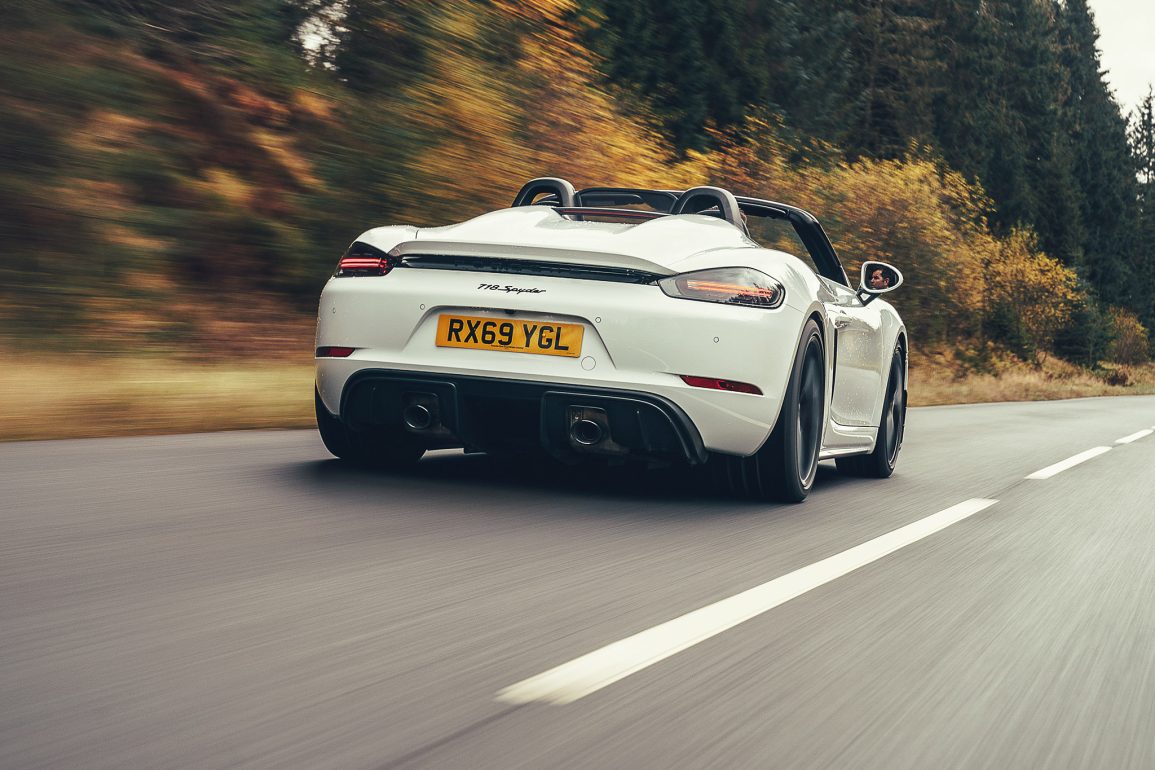
Fourth Generation Porsche 718 Boxster (982) Market Value & Pricing
The market for the fourth-generation Porsche 718 Boxster (982) is currently in a transitional phase, with pricing and values reflecting the wide spread in model years, trim levels, and drivetrain configurations. Early examples from the 2017–2018 period—especially base and S models—have gone through the brunt of their depreciation and now represent some of the most affordable entry points into the modern Porsche sports car experience, often trading hands in the $40,000–$55,000 range depending on condition, mileage, and options. These cars are appealing to value-conscious enthusiasts who can look past the polarizing sound of the four-cylinder turbo in exchange for the mid-engine balance and sharp handling the platform delivers.
Later-model 718s, particularly the GTS 4.0 and Spyder variants, tell a different story. These six-cylinder cars have proven far more resilient in the used market, with GTS 4.0s typically commanding $85,000–$100,000 and the limited-production Spyder often reaching into six figures—especially for well-optioned, low-mileage examples. Values for these are likely to remain strong, particularly as Porsche transitions away from internal combustion engines. Meanwhile, near-new 718 Boxsters from the final 2023–2024 production years haven’t yet seen significant depreciation, especially with lingering demand for analog sports cars. As such, the 982 Boxster remains both a compelling driver’s car and a layered market opportunity, offering everything from bargain performance to long-term collectible potential depending on the variant.
Factors That Affect Value
Several key factors influence the market value of fourth-generation (982) Porsche 718 Boxsters, and understanding these can help buyers make more informed decisions—or sellers price their cars accurately. As an expert, I’ll walk you through the primary value drivers.
Engine type is perhaps the most significant factor. Early 718 Boxsters (Base, S, T) came equipped with turbocharged four-cylinder engines, which—despite offering impressive torque and efficiency—received mixed reactions due to their departure from Porsche’s traditional flat-six soundtrack. As a result, values of four-cylinder variants have generally depreciated more rapidly. In contrast, the later six-cylinder models, particularly the GTS 4.0 and 718 Spyder, are holding value much better thanks to their more engaging character and enthusiast appeal. The naturally aspirated 4.0-liter engine has brought back a sense of purity that many buyers seek in a Porsche sports car.
Trim level and rarity also matter. Limited-production variants like the 718 Spyder and the 718 Spyder RS command premium prices due to their exclusivity, performance credentials, and future collectibility. Porsche’s GTS 4.0 trims strike a balance between performance and usability, making them particularly desirable among buyers who want a daily-drivable car with more visceral engagement. Additionally, any car equipped with a manual transmission tends to carry a premium, particularly among purists and collectors who favor driver engagement over outright speed.
Mileage, condition, and options packages are always pivotal. Lower-mileage, well-maintained cars with desirable options like PASM (Porsche Active Suspension Management), PTV (Porsche Torque Vectoring), and Sport Chrono will typically command stronger prices. Interior trim combinations, exterior color (with shades like Miami Blue or Python Green often adding a premium), and documented service history are all contributing factors. A well-optioned car in a rare or attractive spec will almost always outperform a bare-bones version in resale value.
Finally, market timing and broader EV transition pressures play a growing role. As Porsche moves closer to electrifying its lineup, ICE-powered 718s—particularly the six-cylinder versions—are increasingly seen as the “last of an era,” making them more appealing as future classics. On the flip side, soft demand for used EVs has somewhat insulated the demand for engaging combustion sports cars like the 718, creating upward pressure on values for special variants and keeping depreciation slower than expected for many trims.
What You'll Pay
Pricing for the fourth-generation Porsche 718 Boxster (982), introduced in 2017 and still in production today, varies widely depending on model, specification, condition, and mileage. As of 2024, entry-level 718 Boxsters from the earlier years of production—typically 2017 to 2018—can be found in the low $40,000s for higher-mileage examples in good but not pristine condition. These are usually base models with the 2.0-liter turbocharged flat-four engine, minimal options, and either PDK or manual transmission. If you’re looking for a well-optioned, lower-mileage example with desirable features like PASM, Sport Chrono, or a manual gearbox, expect to spend closer to $50,000–$55,000.
The Boxster S, which features a larger 2.5-liter turbocharged flat-four with more power and torque, typically commands about $8,000 to $12,000 more than a base model. A clean, mid-mileage 2017–2019 Boxster S in good spec can range between $52,000 and $62,000 depending on color and options. The rare 718 T, which combines the base engine with performance-oriented components like PASM and mechanical LSD, often fetches prices similar to the S model because of its focused setup and limited availability. Buyers who appreciate a purist driving experience often gravitate toward the T and are willing to pay for the uniqueness.
The real shift in pricing occurs with the introduction of the 4.0-liter naturally aspirated six-cylinder models in 2020 and onward—specifically the GTS 4.0, 718 Spyder, and most recently, the 718 Spyder RS. A used GTS 4.0 typically starts around $80,000 and can exceed $100,000 for pristine, well-optioned examples with low miles, particularly those with manual gearboxes and special colors. The 718 Spyder, given its open-top nature and shared engine with the Cayman GT4, sees even stronger resale value, usually trading between $95,000 and $125,000 depending on year and spec. The Spyder RS, as the final and most extreme expression of the platform with its GT3-derived engine, has barely begun to depreciate and generally sells above MSRP—often in the $160,000 to $180,000 range depending on mileage and whether it includes the Weissach Package.
Condition, service history, and mileage continue to be major variables within these model tiers. A well-maintained, one-owner GTS 4.0 with full documentation and low miles will always outperform a higher-mileage example with spotty records. Conversely, higher-mileage base models—especially those with less engaging specifications (e.g., no Sport Chrono, PDK only, black-on-black)—can be had at significant discounts and may be excellent value propositions for those prioritizing cost over spec. The overall takeaway is that while early four-cylinder cars have mostly finished their steepest depreciation, the six-cylinder variants are retaining their value extremely well and show potential for long-term collectibility, especially the limited-run Spyder and Spyder RS models.
4th Gen 718 Boxster Driving Experience & What to Expect
What They Said at The Time
When the Porsche 718 Boxster (982) generation debuted, it sparked both admiration and debate. Enthusiasts and journalists largely praised the chassis balance, razor-sharp handling, and overall driving precision, calling it one of the finest-driving roadsters in the world. However, the initial switch from a naturally aspirated flat-six to a turbocharged flat-four in the base and S models drew criticism for its less engaging soundtrack and character. Over time, Porsche addressed those concerns with the introduction of the GTS 4.0 and the Spyder models, which brought back the emotional appeal of the flat-six engine. These variants were celebrated for delivering the full Porsche experience—engaging, visceral, and thrilling—especially when paired with a manual transmission.
Reviewers consistently pointed out that while the early four-cylinder models were technically excellent, it was the six-cylinder cars that reignited the Boxster’s soul. The Spyder and GTS 4.0, in particular, were considered modern classics, offering purist driving thrills in a world moving quickly toward electrification. The 718 lineup has matured into a diverse range, from the capable and accessible base model to the raw and emotional Spyder RS—each carving its own niche while staying true to Porsche’s DNA
Benjamin Zhang of Business Insider highlighted the dual nature of the 718 Boxster S
"At the same time, our Boxster S felt perfectly at peace cruising around with the top down at a leisurely pace on a sunny Saturday afternoon. With the 718, Porsche's chassis and suspension tuning has truly reached new levels of excellence." Business Insider
Barry Hayden from Hagerty praised the GTS 4.0's engine and overall driving experience
"Beyond the noise, this engine is special because it represents a high-water mark for the Boxster... All of this is what makes the GTS so special, and pricier, and why it is arguably the best road-going Boxster ever made." Hagerty
He further emphasized the car's balance between performance and daily usability:
"The compliant ride makes the GTS easy to use all day, every day, too. You can hop in and head to work or plot a course to the other end of the country (or continent) and the Porsche will just get on with it." Hagerty
In a review by Business Insider, the 718 Spyder was lauded for its driving purity:
"The Spyder has a new 414-horsepower flat-six engine that's devoid of turbochargers and, in my car, mated to a crisp six-speed manual transmission... It isn't a practical car, but it is the best Porsche money can buy — and, for me, a ticket to happiness." Business Insider
Chris Rosales of Motor1 described the visceral experience of driving the Spyder RS
"I’m screaming. I can’t hear myself think. I can’t hear myself hear. That is the Porsche 718 Spyder RS experience." Motor1.com
He elaborated on its dual nature:
"The 9,000 rpm flat-six is feral at redline, while the ride quality is some of the best of any road car." Motor1.com
These reviews collectively showcase the 718 Boxster lineup's range—from the versatile S, the balanced GTS 4.0, the purist-focused Spyder, to the exhilarating Spyder RS—each offering a unique driving experience that caters to different enthusiast preferences.
What to Expect Today
The fourth-generation Porsche 718 Boxster (982) delivers a driving experience that still feels modern, engaging, and relevant, even several years after its debut in 2017. At its core, the 718 Boxster remains a pure sports car—mid-engine, rear-wheel drive, beautifully balanced, and tactile in all the right ways. For drivers coming from today's tech-laden crossovers or even performance sedans, the 718 offers something refreshingly direct and mechanical, without sacrificing everyday usability. Steering is sharp, body control is excellent, and the chassis communicates everything that's happening at the road level with just the right amount of feedback. Whether you’re on a winding back road or cruising through city traffic, the 718 feels alive.
That said, there’s a clear split in the 718 lineup—between the earlier four-cylinder turbocharged cars and the later six-cylinder models introduced in 2020. The base and S models use flat-four turbo engines (2.0L in the base, 2.5L in the S), and while they deliver impressive torque and are quicker than the older naturally aspirated flat-six cars they replaced, some drivers feel they lack the aural drama and linear throttle response that enthusiasts expect from a Porsche. The performance is there—0–60 mph in under 5 seconds for the base and closer to 4 seconds for the S with PDK—but the soundtrack can feel a bit flat, especially at low revs. These cars are still a joy to drive hard thanks to the tight chassis, but they don’t stir the soul in quite the same way as the six-cylinder cars.
That changes significantly with the introduction of the 718 GTS 4.0, Spyder, and Spyder RS. These variants bring back the naturally aspirated flat-six, borrowed from the Cayman GT4, and transform the driving experience. The GTS 4.0 hits a sweet spot—powerful (394 hp), beautifully balanced, and just raucous enough when pushed. It’s the kind of car that rewards driver input and sings at high rpm, but it’s still comfortable and usable enough for daily driving. The 718 Spyder ups the emotional appeal with open-air performance and an even more focused chassis setup. It’s less about comfort and more about driver engagement. And the Spyder RS? That’s an altogether different beast. With the GT3’s 4.0-liter flat-six under the rear deck, it’s savage, high-revving, and razor-sharp—more track weapon than grand tourer.
For everyday use, even the base 718 Boxster is entirely livable. Porsche’s ride quality, even on the larger wheels or PASM-equipped models, is compliant enough for commuting, and cabin tech—especially on newer models—is well-integrated, with CarPlay and intuitive controls. The compact dimensions and visibility make it easy to maneuver, while the dual trunks (front and rear) add real practicality. However, if you’re coming from something plush or electric, you’ll notice the 718’s sport-first character. It’s not a luxury cruiser, but it isn’t meant to be.
Overall, the 718 Boxster remains one of the best-handling, most rewarding sports cars you can buy—especially on the used market. For those seeking a pure driving experience with modern Porsche reliability and style, it continues to be a standout. If you prioritize sound and emotion, the GTS 4.0 or Spyder is worth the premium. If you're after great handling and value, the base or S still deliver a thoroughly Porsche experience, even in today's performance landscape.
Getting Real - Costs to Own & Maintenance
Owning and maintaining a fourth-generation Porsche 718 Boxster (982) offers a relatively manageable ownership experience by modern sports car standards—especially if you understand how warranty status, usage patterns, and model choice influence your costs. For buyers of newer 718 Boxsters, particularly those from model years 2022 and later, Porsche’s four-year/50,000-mile new vehicle warranty provides strong protection against unexpected mechanical failures. Many of these cars are still within that factory coverage or are eligible for Certified Pre-Owned (CPO) warranties, which can extend protection for up to six additional years. That makes budgeting simpler in the short term, especially since most scheduled maintenance is predictable and not overly expensive compared to more exotic models.
However, for earlier 718 Boxsters from 2017–2019, which are now out of warranty (unless extended coverage was purchased), the ownership equation shifts. These cars may require more proactive maintenance planning, especially as they approach higher mileage intervals where items like spark plugs, fluid changes, and brakes become due. Routine servicing at a dealership typically runs $400–$800 per visit for basic items like oil changes, inspections, and minor fluid flushes. Costs rise for more involved work such as clutch replacement (on manuals), suspension bushings, or out-of-warranty electronic components, which can easily top $2,000–$4,000 per job. Independent Porsche specialists can sometimes offer savings, but high-quality parts and labor still command a premium.
Parts availability for the 718 Boxster is excellent, as Porsche maintains strong support for its newer models, and many wear items (brakes, filters, tires) are widely available from both OEM and aftermarket sources. That said, some items—like specific bodywork for the Spyder or GTS 4.0—can be pricey if damaged, and replacement wheels or lighting components tend to cost more than average due to their specialized nature.
Insurance for the 718 Boxster varies widely based on location, driver profile, and the variant you choose. A base 718 Boxster will generally cost less to insure than a Spyder or GTS 4.0, especially if the latter is a weekend toy with limited mileage. Expect insurance premiums to range from $1,200 to $2,500 annually for most drivers, with higher-end variants, younger owners, or urban locations driving that figure higher. Overall, while the 718 Boxster isn’t a cheap car to own, it’s also not punishing—especially when compared to other mid-engine or high-performance sports cars. The key is to factor in warranty coverage, plan for preventive maintenance, and work with knowledgeable service providers to keep ownership costs in check.
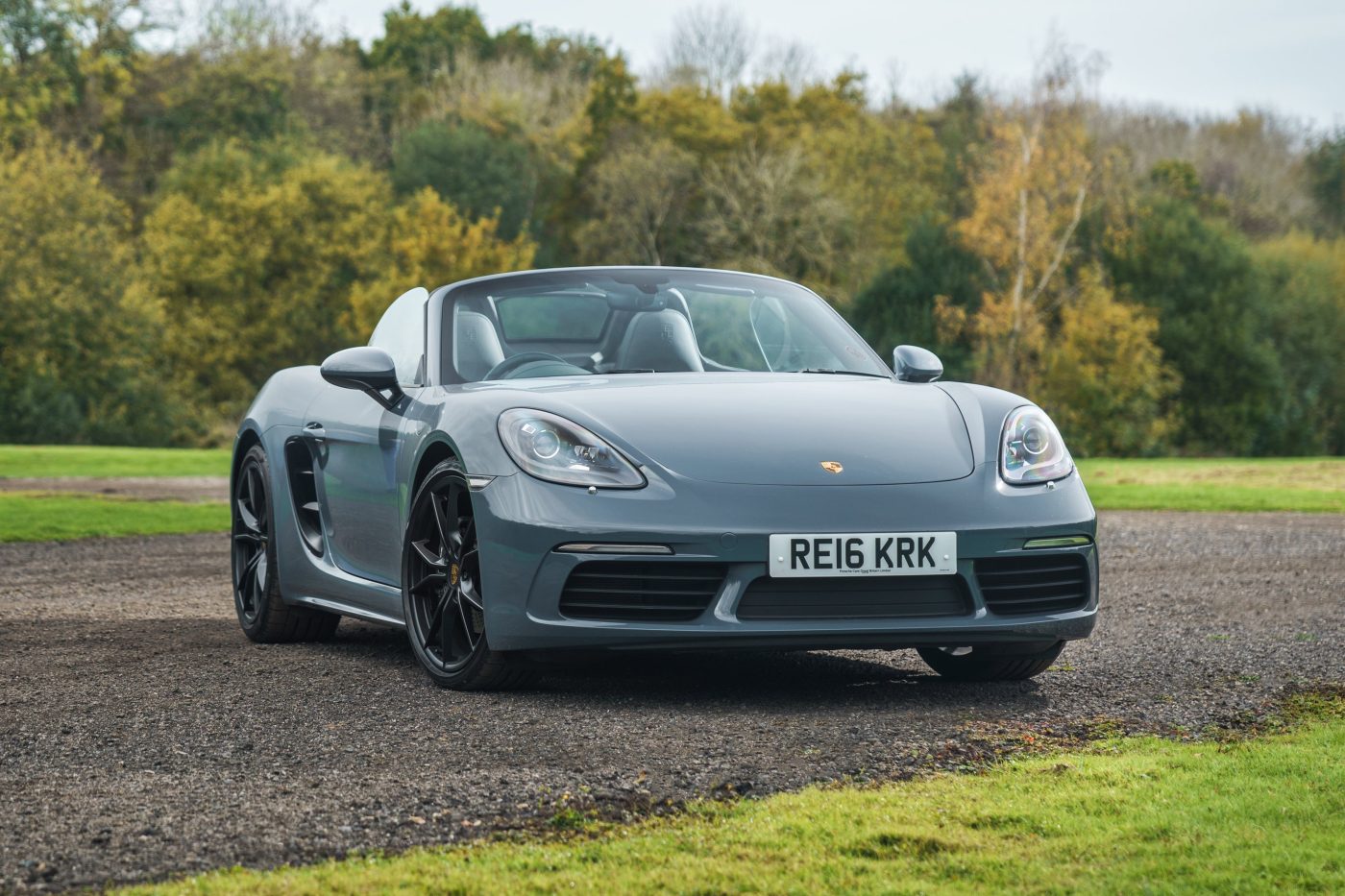
Common 4th Gen Porsche 718 Boxster (982) Problems
What Buyers Should Know
The fourth-generation 718 Boxster (982), while generally reliable, is not without its quirks and known trouble areas—especially as these cars age and early examples leave warranty coverage. Buyers considering a used 718 Boxster should approach the purchase with an understanding of several recurring issues that have been reported by owners and independent specialists alike.
First and foremost, the 718’s turbocharged flat-four engines in the base and S models (2.0L and 2.5L, respectively) have been known to exhibit issues related to turbocharger wastegate actuators. Symptoms may include check engine lights, erratic boost, or reduced performance. While not universally problematic, these components have generated enough service history to merit a pre-purchase inspection that includes a diagnostic scan. Additionally, oil consumption—though far less pronounced than in older Porsche engines—can still be an issue in heavily driven cars, particularly those that saw frequent spirited use or track time.
With the naturally aspirated 4.0-liter flat-six engine used in the GTS 4.0 and Spyder variants, the engine itself is robust and thrilling, but it has a known tendency for intermittent idle fluctuations and cold-start stumbles. These are often software-related and can be resolved through ECU updates, but buyers should be aware that these behaviors are not entirely uncommon. Cooling system issues, such as leaks from water pumps or thermostats, are another known item, especially as mileage climbs. While not catastrophic, these repairs can be costly and should be budgeted for in higher-mileage cars.
Across all variants, some owners have reported premature wear of suspension components like control arm bushings and rear toe links—particularly in cars used aggressively or on rough roads. These parts are wear items, but Porsche pricing means they aren’t cheap to replace, especially when labor is involved. The PDK dual-clutch transmission is generally robust but has required occasional replacement of mechatronic units or software updates in rare cases, particularly in earlier cars. Manual transmission cars can suffer from premature clutch wear if driven harshly, although they are otherwise well-regarded for engagement and durability.
Lastly, like many modern cars, 718 Boxsters rely heavily on electronic systems, and issues with infotainment glitches, backup cameras, or sensors (such as parking and lane-keep assist) are not uncommon. Most are minor and software-related, but diagnosing electrical gremlins can be time-consuming without dealer-grade tools.
The bottom line for buyers: a well-maintained 718 Boxster with a clean service history, recent software updates, and a thorough inspection is generally a safe and satisfying purchase. However, skipping these steps or assuming all newer Porsches are trouble-free can lead to costly surprises. Knowledgeable ownership—or buying from a reputable specialist—is essential to getting the most from this brilliant mid-engine platform.
Buying A Porsche 718 Boxster (982) FAQs
Here are all the questions we've received from readers considering a 4th Gen Boxster for their driveway
What are the top five things to look for when buying a 4th gen 718 Boxster?
When shopping for a fourth-generation Porsche 718 Boxster (982), there are five key areas that any serious buyer should focus on to ensure a confident purchase. These aren’t just typical used car considerations—they’re specific to the 718's unique traits, drivetrain options, and evolving ownership history over the years since its 2017 launch.
First and foremost, determine whether the car has the turbocharged flat-four or naturally aspirated flat-six engine, as this has a significant impact on both driving experience and long-term value. The early 2.0L and 2.5L flat-four engines found in the base and S trims offer strong performance, but they drew criticism for sound and character. The 4.0L six-cylinder in the GTS 4.0, Spyder, and Spyder RS models provides a more traditional Porsche feel and is in higher demand. Some buyers specifically avoid the flat-fours, while others value their efficiency and lower pricing. It’s crucial to drive both and decide what suits your taste.
Second, check for a comprehensive service history and warranty status. Many early 718s (2017–2019) are now out of factory warranty, which means any mechanical or electrical issues could fall on you. Porsche warranties are transferable, so if a car is a Certified Pre-Owned (CPO) vehicle, or if it still has factory coverage, that’s a huge bonus. This also helps offset concerns about things like turbocharger issues, coolant leaks, or electronics faults, which can be expensive to diagnose and fix.
Third, confirm the presence and condition of key options, especially the PASM adaptive suspension, Sport Chrono package, sport exhaust, and upgraded seats. These extras dramatically shape the driving feel and resale appeal of the 718. A well-optioned base car can be more enjoyable than a stripped-down S, and used buyers are often drawn to cars with a few enthusiast-focused upgrades. The right mix of options is a big value factor in the 718 world.
Fourth, inspect the wheels, brakes, and suspension for wear, especially on cars that may have seen aggressive driving or track days. Look for uneven tire wear, brake rotor grooves, or worn bushings—any of which could signal a car that’s seen hard use. Cars with wider tires and 20-inch wheels (especially GTS or Spyder trims) may also be more prone to curb rash or suspension strain on rough roads. Don’t underestimate the cost of bringing these components up to spec.
Finally, evaluate the infotainment system and all electronics carefully. PCM (Porsche Communication Management) glitches, rear camera failures, and sensor issues are not unheard of. While most are minor, they can be a hassle and are worth checking during a thorough test drive. Also, ask about any software updates or recalls—Porsche periodically releases updates that improve drivability, emissions, and system reliability, and a dealer-maintained car is more likely to be current.
In short, the 718 Boxster is one of the best-balanced modern sports cars you can buy, but to get the right one, it pays to dig into engine spec, maintenance history, optional equipment, mechanical condition, and electronic functionality. The good news is that when you find the right example, it rewards with driving satisfaction far beyond its price point.
Just how important are service records and ownership history?
For a fourth-generation Porsche 718 Boxster, service records and ownership history are absolutely critical—especially as the earliest cars are now eight years old and beginning to show the long-term effects of how they’ve been driven and maintained. These mid-engine sports cars are finely tuned machines, and while they’re generally more robust than earlier Boxsters, skipping maintenance or servicing them outside of recommended intervals can lead to costly issues down the line.
A complete service history helps verify that routine care—such as oil changes, brake fluid flushes, PDK or manual transmission servicing, and coolant system inspections—was done on schedule. This is particularly important on turbocharged models, where oil quality and cooling system health directly impact turbo longevity. Cars with documented Porsche dealer or certified independent shop service tend to hold value better and give future owners peace of mind.
Ownership history is just as revealing. A one- or two-owner car that’s been carefully kept, garaged, and driven as a second or weekend vehicle will usually present better and have fewer issues than one with a string of short-term owners or gaps in its records. Long-term owners tend to be more proactive about preventative maintenance and less likely to cut corners on service. Also, if a car was ever tracked, modified, or involved in a collision—even if repaired—these details matter.
Ultimately, for a car like the 718 Boxster, where refinement and performance are so closely linked to condition, strong documentation isn’t just a bonus—it’s a buying prerequisite. If a seller can’t show consistent records or if there are big gaps in the car’s timeline, it’s wise to either negotiate accordingly or keep shopping.
What are the most sought after 4th Gen Porsche 718 Boxster (982) variants?
Among fourth-generation Porsche 718 Boxsters (982), the most sought-after variants are those that deliver the highest level of performance, exclusivity, and a return to naturally aspirated engines—particularly models that elevate the driving experience while staying true to Porsche’s enthusiast roots. At the top of that list is the 718 Spyder RS, a limited-production halo model introduced for 2024. With its 4.0-liter flat-six derived from the 911 GT3, an 8,000+ rpm redline, and track-ready tuning, it has become an instant collector favorite. Its rarity, motorsport DNA, and exhilarating performance make it the ultimate 718 Boxster—and prices have already surged accordingly.
Just below that sits the 718 Spyder, which shares its naturally aspirated 4.0-liter engine with the Cayman GT4. The 718 Spyder offers open-top thrills without the compromises of the earlier Boxster Spyders, making it one of the most desirable modern Porsche convertibles. Manual transmission versions are particularly prized for their purity and connection to Porsche’s traditional driver-first philosophy.
Also high on the list is the 718 Boxster GTS 4.0, which struck a sweet spot for many buyers when it launched in 2020. It brought the beloved naturally aspirated engine to a broader audience at a lower price point than the Spyder and GT4. These cars, especially with the 6-speed manual, are considered by many enthusiasts to be the best all-arounders in the entire 982 range: fast, visceral, and usable every day.
Further down, but still desirable, are early 718 Boxster S models, which offered a healthy jump in power over the base version thanks to their 2.5-liter turbocharged flat-four. Though not as charismatic in sound, the S still delivers strong real-world performance and sharp handling. Well-optioned examples—particularly those with PASM, Sport Chrono, and PDK or manual gearboxes—remain attractive on the used market.
While the base 718 Boxster and the mid-tier T model offer great value, it’s the high-performance, naturally aspirated flat-six models that generate the most interest, appreciation potential, and emotional connection from enthusiasts.
What are the best 4th Gen Porsche 718 Boxster (982) options and extras?
When it comes to the fourth-generation Porsche 718 Boxster (982), the right options can dramatically elevate both the driving experience and long-term desirability. For enthusiast buyers, performance-enhancing extras tend to offer the best value and engagement. The Sport Chrono Package is widely considered essential—it sharpens throttle response, unlocks launch control with PDK, adds a dashboard-mounted stopwatch, and introduces selectable driving modes that transform the car’s behavior. Whether you’re carving up a canyon road or just seeking more excitement on your daily commute, this option adds real substance.
PASM (Porsche Active Suspension Management) is another standout. It allows the driver to toggle between comfort and sport suspension settings, significantly improving ride quality and agility. On GTS and Spyder models, PASM is typically standard, but on base and S trims, it’s a must-have for drivers who appreciate dynamic precision. Paired with Porsche Torque Vectoring (PTV) and the optional limited-slip differential, especially on manual transmission cars, it turns the 718 Boxster into a far more capable and rewarding car on twisty roads or track days.
Visually and functionally, options like LED headlights with Porsche Dynamic Light System Plus (PDLS+), 18-way Adaptive Sport Seats, and leather or Race-Tex interior upgrades add a layer of luxury and modern appeal. While these may not impact performance directly, they enhance the day-to-day experience and help the car feel more special. Enthusiasts often seek lightweight bucket seats in Spyder and Spyder RS models, which reduce weight and increase support, though these are more polarizing for daily use.
On the tech side, Apple CarPlay, the BOSE or Burmester sound systems, and navigation with Connect Plus round out the list of desirable extras—especially for drivers using their 718 as a regular road car. One final note for collectors and resale value: Paint to Sample (PTS) colors, special wheels, and contrasting interior trims can command premiums, particularly on GTS and Spyder models. In short, a well-optioned 718 Boxster not only drives better—it stands out in the market, both now and down the road.



